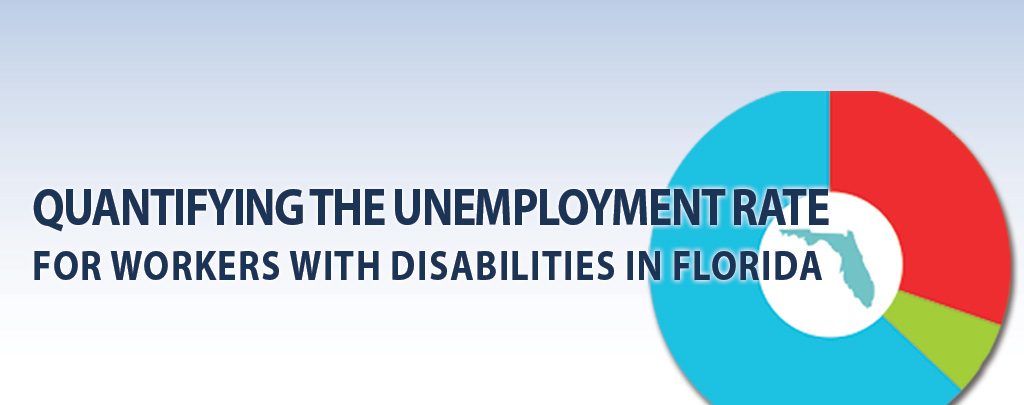A Florida Scorecard Research Project
> LEARN MORE About the Florida Chamber Foundation’s Internship Program
As Florida prepares for its future workforce including the continuing retirement of baby boomers, each component of the potential workforce can contribute to the estimated two million additional jobs needed in Florida by 2030. One component of the workforce analyzed here is the population of Floridians with disabilities. There is no regularly-published data on the employment and unemployment rates for Floridians with disabilities. Indeed, the only monthly data available is at a national level. To establish a starting point that can be used for future analysis of the effectiveness of programs designed to help Floridians with disabilities who want to work, this paper estimates both a state-wide unemployment rate for persons with disabilities (PWDs) in Florida as well as unemployment rates for individual counties.
There are more than 1.13 million Floridians with disabilities in the age range of 16 to 65 – the typical age group looked at for potential workforce. Currently 62.9 percent of Floridians with disabilities are not in the workforce, therefore they are not counted in the calculation of the unemployment rate, because only those looking for work recently are included in the “unemployed” category. Whether they are not in the workforce because they have given up looking for work or for some other reason, this translates to more than 700,000 Floridians with disabilities who are not in the workforce according to the latest data available.
Results show that during 2014, the annual average overall unemployment rate was 6.3 percent in Florida. The calculated unemployment rate for Floridians with disabilities, using data for Florida’s 40 most populated counties, was 18.1 percent. When comparing the county-level distributions of unemployment rates for Florida’s population with a disability and for those without disability, the unemployment rates for those without disability are concentrated in a smaller range around the statewide overall rate, with a relatively low standard deviation. Those county-level unemployment rates for Floridians with a disability have a much-wider range and are in most cases substantially higher. This variability could be due to multiple reasons such as difference in resources available to help find employment, differences in types of disabilities, and measurement error. This unknown variability calls for further research in order to find out what can explain the substantially higher variation.
This newly-produced data will be used on The Florida Scorecard and will offer Florida policymakers a new tool to help quantify the amount of progress Florida makes over the next several years in utilizing Floridians with disabilities in the state’s workforce.
